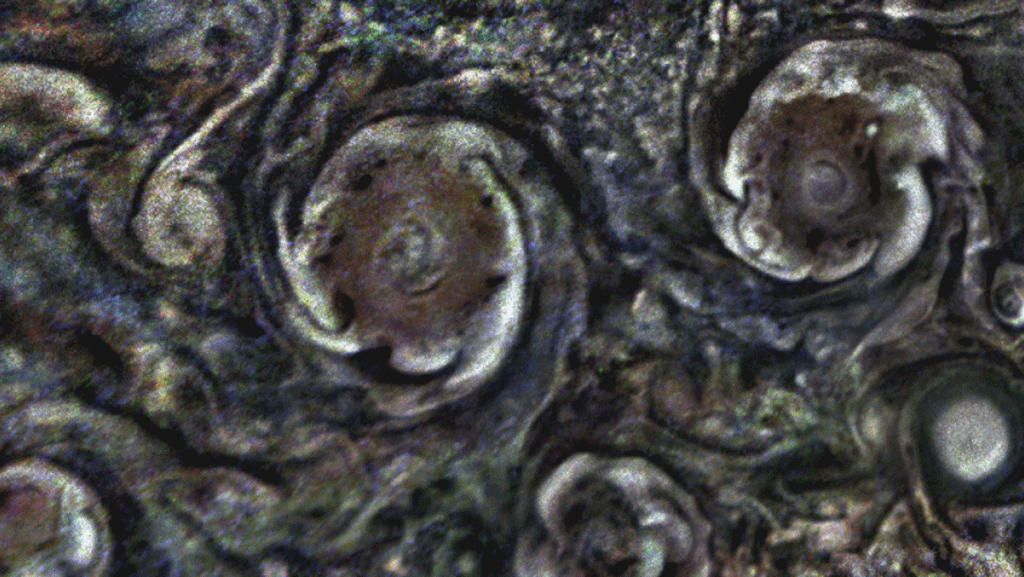Polar cyclones on Jupiter create a spellbinding vortex cluster
NASA's Juno mission presents a new spin on the massive gas giant's surface.

Jupiter's north pole is a swirling mass of cyclones, and their mesmerizing dance was recently captured in astonishing detail in images from JunoCam, the visible light camera/telescope on NASA's Juno orbiter.
The Juno mission, launched on Aug. 5, 2011, has been collecting data on Jupiter since 2016. Juno recently completed its 29th orbit of the gas giant, and its scientific instruments are revealing clues about Jupiter's cyclone clusters.
They are also providing a glimpse into atmospheric zones that are warmer and drier than surrounding areas. These atmospheric hot spots fuel discharges of electricity and shape the formation of "mushballs" — slushy hailstones made of ammonia and water at high altitudes, Juno scientists said on Dec. 11 at the annual meeting of the American Geophysical Union (AGU). The researchers presented Juno's latest findings at the conference, held virtually this year.
Related: In photos: Juno's amazing views of Jupiter
Two of Jupiter's big northern cyclones are visible in a new animation of JunoCam photos, created from five images taken from altitudes of about 18,000 miles (28,567 kilometers) above Jupiter's cloud cover. The outer clouds in the cyclones are rotating counterclockwise, but the inner clouds rotate clockwise, which is "rather strange," Candice Hansen, developer of the JunoCam and a senior scientist at the Planetary Science Institute in Tucson, Arizona, said at the conference.
The different rotation directions in the cyclones may have to do with their vertical structure. "Maybe these clouds are at different levels in the atmosphere," Hansen said. "We're looking forward to getting microwave data soon so that we can see just how deep the 'roots' go" in these polar cyclones, she added.
Understanding gas giant planets with deep atmospheres such as Jupiter requires peering far below the cloud layer, and Juno "does just that," Scott Bolton, principal investigator of Juno at the Southwest Research Institute in San Antonio, said in a statement.
Sign up for the Live Science daily newsletter now
Get the world’s most fascinating discoveries delivered straight to your inbox.
"The spacecraft's observations are shedding light on old mysteries and posing new questions — not only about Jupiter, but about all gas giant worlds," Bolton said.
Originally published on Live Science.

Mindy Weisberger is an editor at Scholastic and a former Live Science channel editor and senior writer. She has reported on general science, covering climate change, paleontology, biology and space. Mindy studied film at Columbia University; prior to Live Science she produced, wrote and directed media for the American Museum of Natural History in New York City. Her videos about dinosaurs, astrophysics, biodiversity and evolution appear in museums and science centers worldwide, earning awards such as the CINE Golden Eagle and the Communicator Award of Excellence. Her writing has also appeared in Scientific American, The Washington Post and How It Works Magazine. Her book "Rise of the Zombie Bugs: The Surprising Science of Parasitic Mind Control" will be published in spring 2025 by Johns Hopkins University Press.










